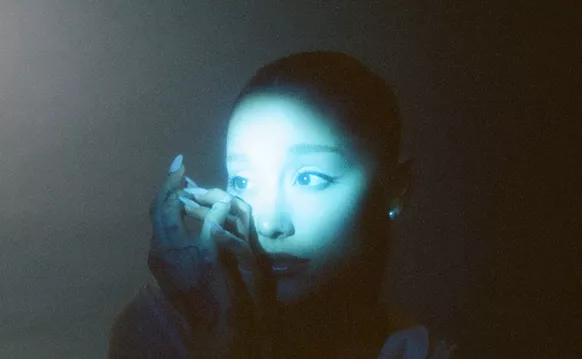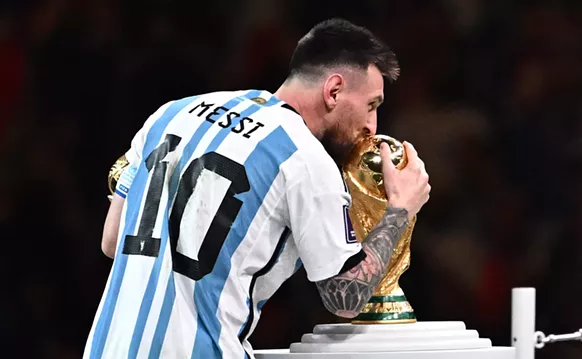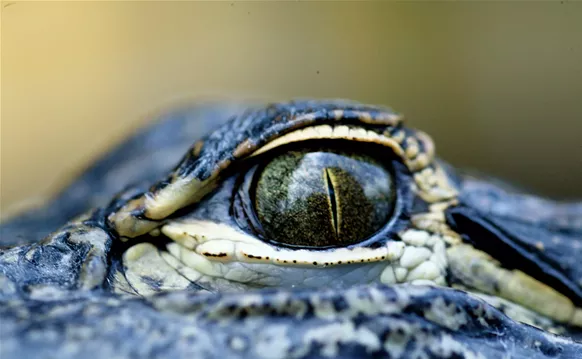Dressed in short blue jogging shorts, a tank top, and sneakers, Zachary Fabri clamored up the famous steps of the Metropolitan Museum of Art. When he got to the African wing, surrounded by ancient, glass-encased objects, he pulled an orange skullcap over his dreadlocks and began silently doing a ritualistic dance. The movements looked like a fast tai chi — his feet stepping and his arms swooping as though he were collecting invisible objects from the air. Some museumgoers crouched down and watched, transfixed; others nervously looked away; yet others walked past and pretended not to notice him.
In the lobby, the museum's security guards caught up with Fabri and yelled: "You need to leave the premises right now!" The confused bunch surrounded him, and he slowly dropped to his knees, remaining in character and submitting to the guards. "They looked like they were in a position of power and violence over me," recalls Fabri.
Unaware that this was an artistic performance, the guards continued to surround Fabri, who responded with a simple, "I'm not doing anything. But OK, I'll leave." He was not shy about provoking unsuspecting passersby or even security guards but preferred not to get arrested. Still, he took his sweet time inching steadily to the door.
The confrontation with the guards would ultimately be edited out of Fortune's Bones, a 13-minute, 16-second video that shows Fabri performing in the street along Museum Mile on Fifth Avenue as well as inside the museums, where he pierced the solemn setting. His improvised guerrilla performance was meant to confront the metaphoric "skeletons in the closet" of major cultural institutions and question the ethics of collecting artifacts from indigenous cultures.
Fabri was born and raised in Miami to Jamaican and Hungarian parents. Because of his biracial upbringing, class, economics, and politics are reflected in his work, which can be seen in four videos on display at the Museum of Art|Fort Lauderdale.
Fabri's work deals with contemporary sociopolitical issues, so an exhibit of his videos adds a fresh complement to the museum's concurrent show of photographs by civil rights pioneer Bob Adelman. Both shows will remain up through May 17.
The 37-year-old Fabri explains that "my works pulls from African-American politics, both the civil rights movement and what is going on today," he says. "Oftentimes, I am creating conversation through political repression that has happened in the past and then being aware and conscious of how things have changed and have not changed today."
Meaning is derived from his props and his movements within the context of a carefully chosen setting; there's hardly any dialogue. "A lot of my work doesn't involve too much talking," Fabri says.
He moved to New York in 2000 and earned his MFA from Hunter College, City University of New York, after picking up a BFA in graphic design from the University of Florida. His residencies have taken him to Berlin, Brazil, Maine, and around New York City, and he additionally takes on graphic design and teaching gigs.
To Fabri, performance art means he uses his body as a creative tool. He views his body as political and enjoys putting himself in various contexts.
Forget Me Not, as My Tether Is Clipped spans 14 minutes and 50 seconds. It was shot in black-and-white 16mm film and captures the artist with balloons tied to his dreadlocks. The scenes are in and around Harlem, where the artist lived for several years. One location is Marcus Garvey Park, a space devoted to the Jamaican-born activist. The video's message metaphorically examines the intersection of memory — signified by the balloons — and history and how past beliefs shape current perspective.
Two two-minute videos are also on display, and Fortune's Bones rounds out the set.
"A major part of this was to create a dialogue," Fabri says. "Me doing performance on the street and inside the museum — and how that registers to the audience," he says.
See more of the artist's work at zacharyfabri.com.









